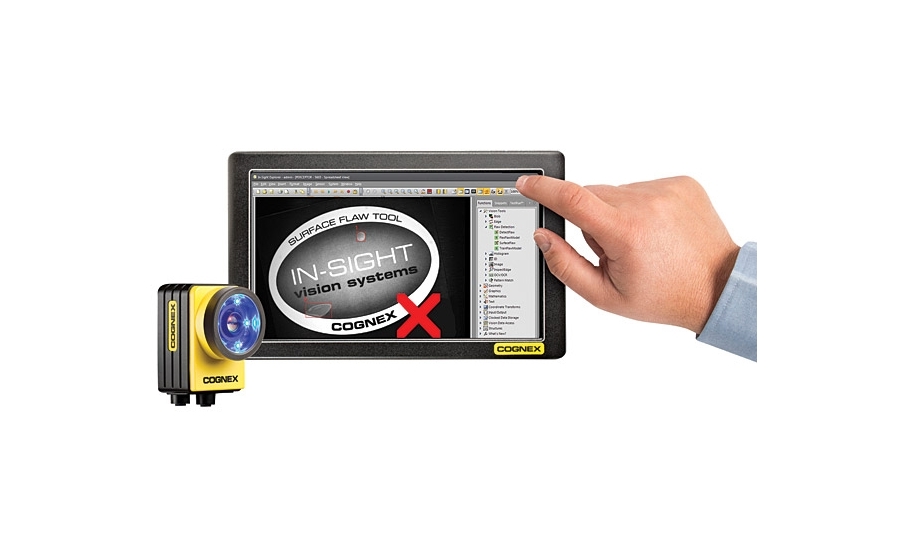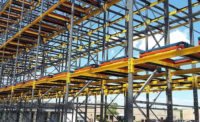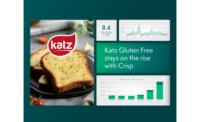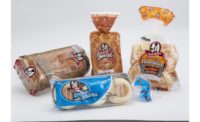For more than 100 years, the Roberts family has baked some of the finest breads and morning goods at its Roberts Bakery for retail and catering customers throughout the UK, Europe and beyond. Frank Roberts produces over two million baked goods each week. This high production rate caused difficulties with the inspection of leftover bread in their loaf tins. They now rely on Cognex In-Sight cameras with a laser line scanner to optimize their production lines and ensure the inspection of each loaf tin after baking, thus reducing waste.
The dough is placed in tins to be baked in batches at an impressive 5,200 farmhouse loaves per hour, six days a week. After de-panning, leftover bread would need to be removed manually before the tins could be reused in the process. Normal vision methods were not sufficient to detect when manual de-panning was necessary because of the dark-colored tins. Waste and production delays required an urgent resolution.
An integrated approach
To address this urgent need, Frank Roberts approached Capley Marker, a trusted vision partner who had worked on numerous applications in the past and were recommended by Cognex to undertake this new vision project. The bread production line is a continuous loop production system. Once the freshly baked loaf is removed from the tin, the tin is then transported via a conveyor back to the dough molding plant where a fresh dough piece awaits, allowing time to proof the dough, i.e., rise to fill the tin, before being baked.
Assessing the project in detail, Capley Marker installed a Cognex In-Sight 5100 Black/White camera combined with “structured lighting,” achieved by integrating the camera with a laser line scanner. Caply’s built a custom housing for the Cognex camera and a Mitsubishi PLC which communicates with the In-Sight Explorer interface. The system is positioned just outside of the Roberts’ custom-designed tin ejection system, which removes the freshly baked loaves from the tins. A laser line shines directly into the cavity to ensure that each tin is completely empty, detecting any leftover produce. The loaves that are unsuccessfully de-panned are then ejected from the return tin line, where an operator manually extracts the bread.
Reduce waste and maintain production throughput
The resulting system reduces the amount of wasted bread that would normally return to the dough plant and reduces the quantity of times they must stop production while the tin is prepared. If the tin is rejected by the vision system, the loaf still may be saved after the operator removes it manually, if is acceptable quality-wise. It will then be placed in the hot bread conveyor, which moves it into the cooler. Also, when the operator inspects the rejected tins they may be able to identify why the loaf was not de-panned automatically (e.g., the tin may be misshapen). The operator is then able to prevent it from happening again by placing the tin in a quarantine rack for repair, thereby reducing waste and maintaining production throughput.
Ignoring the problem was not an option
Niall Reilly, senior software engineer at Frank Roberts, commented: “Given the current high costs of raw ingredients and energy, this vision system really does drive down waste figures at this plant thus increasing overall production and reducing costs. The ejection count also helps us identify any quality issues with tins or perhaps a particular product which may be more difficult to de-pan due to shape or ingredients.”
Peter Rams, senior maintenance engineer at Frank Roberts, added, “Without this laser scanner and camera in place, the line would simply not be in operation.”
Frank Roberts is also investigating adding more vision systems to aid in “dough ball inspection,” where trouble can be avoided before baking.
About Cognex
Cognex Corporation is the world’s leading provider of vision systems, vision software, vision sensors and industrial ID readers used in manufacturing automation. Cognex vision helps companies improve product quality, eliminate production errors, lower manufacturing costs, and exceed consumer expectations for high quality products at an affordable price.




